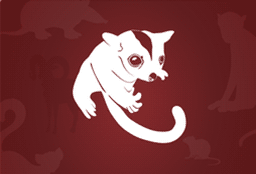The southern brown tree frog is native to southern Australia. Other common names of this tree frog are brown tree frog, whistling tree frog, or Ewing's tree frog.
Ranges from pale fawn, cream, or orange to light brown, although some individuals in western Victoria and South Australia are partly or completely green. It has a wide brown band that starts from between its eyes and runs down its back. Darker flecks are also scattered across its back. It has a narrow black or brown stripe that runs from its snout to its shoulder, and a pale stripe that runs from below its eye to the base of its arm. Its belly is white to yellow and breeding males have a light brown vocal sac (beneath their mouth).
Distinctive features
Its back is smooth with small lumps, its fingers have no webbing and its toes are half webbed.
The striped marsh frog or brown-striped frog is a common species in urban habitats It is a mostly aquatic frog native to coastal Eastern Australia.
A pale to grey-brown back with darker brown stripes. Usually also a pale stripe running down the middle of its back. Its belly is white and often flecked with brown, and there are dark spots and stripes on its limbs.
Size
4.5 - 7.5 cm
Grey soft fur, with a white belly and a black stripe that runs from its nose, over its head and along its back. It has a long bushy tail, the last quarter of which is black, often with a white tip. Its ears are large and hairless, and its large eyes are black.
Size
About 28 cm long (from nose to tip of tail).
Metallic blue-black on top and light to dark grey on its breast and belly. Its forehead, throat and upper breast are rust in colour. It has grey legs and feet, and its eyes and bill are black. A young Welcome Swallow has shorter tail feathers than an adult and its forehead and throat are a creamy beige (instead of rust).
Distinctive feature
A deeply forked tail with a white band or row of spots on the long tail feathers.
Also known as Cape Lilac. It reaches maturity when it is 6 – 10 years old and lives for about 20 years.
Deciduous tree, usually 10 – 15 m high but can reach 45 m in its natural environment. Its canopy is 6 – 8 m wide.
Leaves
Bright glossy green and oval in shape, 2 – 7 cm long and 1 – 3 cm wide. They are arranged either side of a 12 – 45 cm long stem and turn yellow in late autumn before falling from the tree in winter.
Flowers
Pale purple to white, star-shaped, forming clusters that are 10 – 20 cm long. Each individual flower is about 2 cm in diameter and consists of 5 petals. The flowers have a chocolate scent!
A medium-sized black and white honeyeater. It has large bright yellow tail and wing panels, with a large conspicuous white cheek patch on a mainly black head. Young birds are duller with brownish plumage.
Size
16-18 cm
One of Australia's most widespread birds on mainland.Mostly black with a white belly and eyebrow. A young bird has paler, slightly rusty edges to its wing feathers.
Size
18 - 22 cm long (from head to tail)




